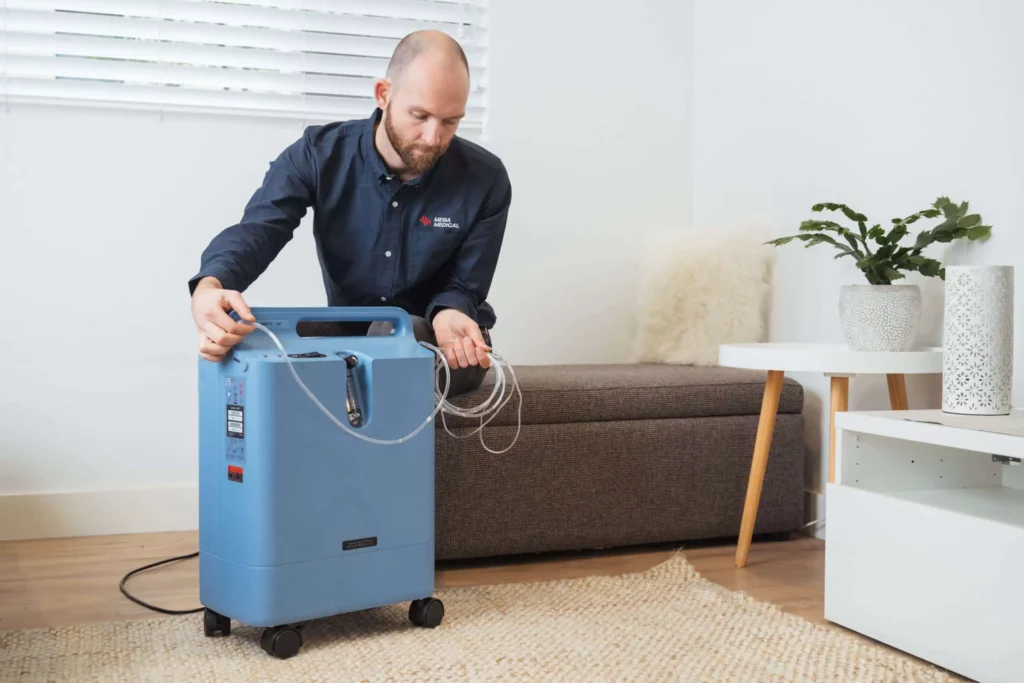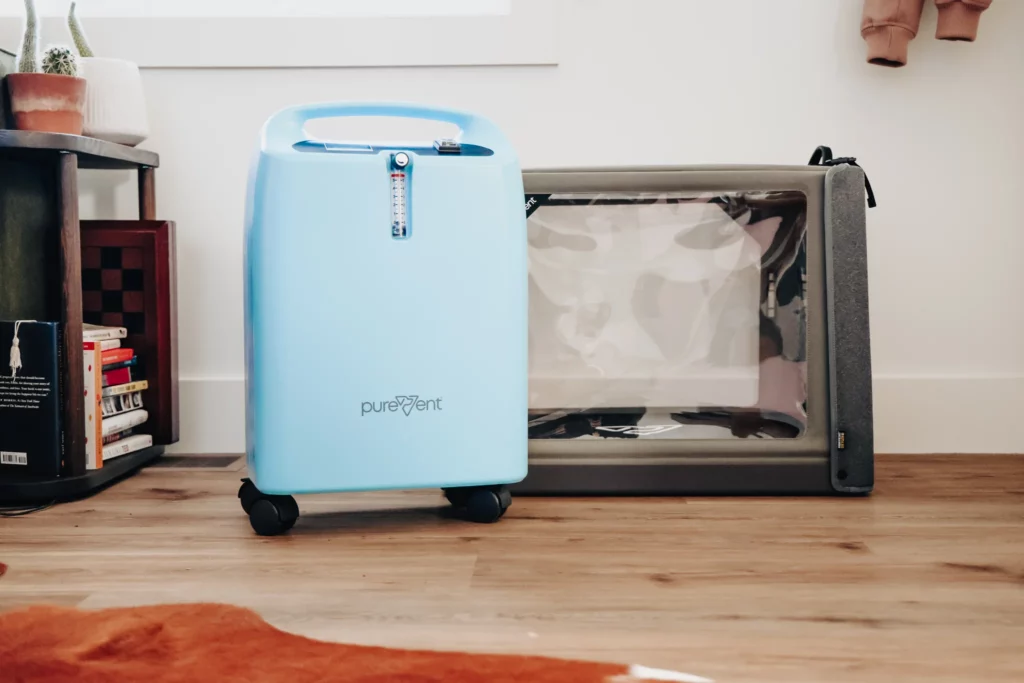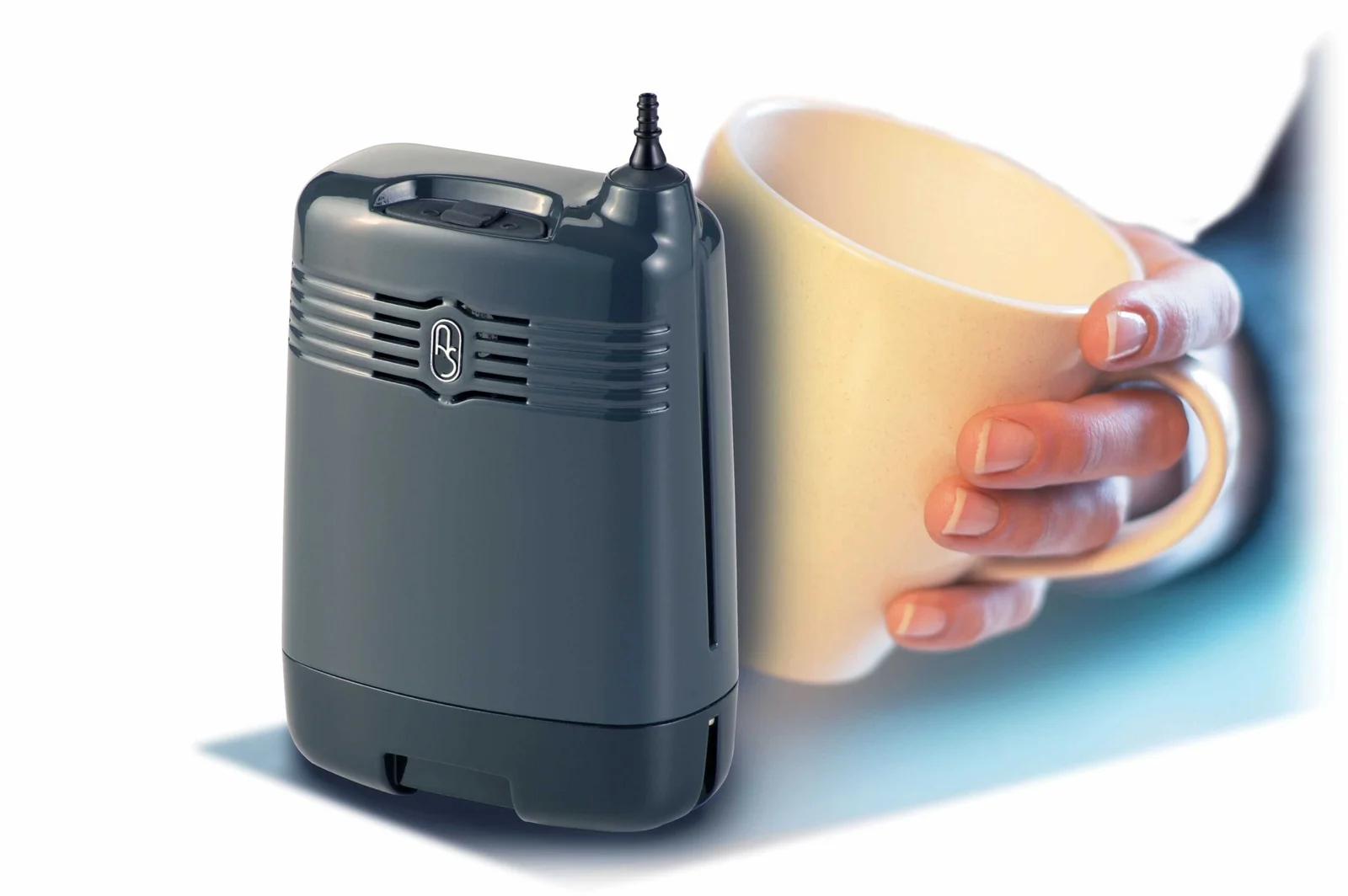What Are Portable Oxygen Concentrators and Why Are They Important?
Portable oxygen concentrators are medical devices that extract oxygen from the air and deliver it to users who need extra oxygen therapy. These compact machines greatly improve the lives of people with breathing problems by removing the need for heavy oxygen tanks and stationary equipment.
The Importance of Portable Oxygen Concentrators
Portable oxygen concentrators, such as the Inogen One oxygen concentrator, are important because they allow users to receive continuous oxygen therapy while remaining mobile. This means individuals can travel, work, exercise, and participate in social activities without being restricted by large equipment. This newfound freedom has a positive impact on their quality of life, mental health, and physical well-being.
Understanding the Significance of Portable Oxygen Concentrators
The significance of portable oxygen concentrators lies in their ability to provide continuous oxygen therapy while maintaining mobility. Users can travel, work, exercise, and engage in social activities without being tethered to bulky equipment. This freedom directly impacts quality of life, mental health, and physical well-being.
When comparing Philips SimplyGo vs Inogen One, these two brands represent the gold standard in portable oxygen therapy devices. The Philips SimplyGo and Inogen One series dominate the market due to their reliability, advanced features, and proven track records. Each device offers distinct advantages that cater to different user needs, making the choice between them a matter of matching specific oxygen requirements with lifestyle preferences.
Key Features of Philips SimplyGo
The Philips SimplyGo stands out for its dual oxygen delivery capability, offering both continuous flow oxygen and pulse dose oxygen modes in a single device. This versatility allows users to receive uninterrupted oxygen therapy during sleep while switching to pulse dose mode for daytime activities, making it one of the few portable concentrators that accommodates diverse therapy requirements.
The device weighs approximately 10 pounds, positioning it as a mid-weight option in the portable oxygen concentrator market. While heavier than some competitors, this weight reflects the robust internal components necessary to support continuous flow delivery, which requires more powerful technology than pulse dose systems alone.
Philips SimplyGo features include:
- Continuous flow settings ranging from 0.5 to 2 liters per minute (LPM)
- Pulse dose settings from 1 to 6, providing flexibility for varying activity levels
- Durable construction designed for daily use and extended operational periods
- Reliable performance during physical activities, from walking to light exercise
- Sleep-compatible operation with continuous flow mode for nighttime therapy
The device’s reliability makes it suitable for users requiring consistent oxygen delivery throughout 24-hour periods. Its ability to function during both rest and activity eliminates the need for multiple devices, though users should consider whether the 10-pound weight aligns with their mobility requirements and daily routines.
What Are the Main Characteristics of Inogen One Series?
The Inogen One series delivers oxygen exclusively through pulse dose oxygen delivery, which releases oxygen only when the user inhales. This intelligent system conserves oxygen and extends battery life, making the Inogen One features particularly attractive for active users who need reliable therapy throughout the day. Read more about Oxygen supplement for aged care.
Weight and Portability
The standout characteristic of Inogen One models, especially the G5, is their remarkably lightweight construction at under 5 pounds. This compact design transforms daily mobility, allowing users to carry the device comfortably in a shoulder bag or backpack without physical strain. The reduced weight makes extended outings, shopping trips, and social activities significantly more manageable.
Operational Benefits
The device operates with minimal noise, typically producing sound levels between 37-40 decibels—comparable to a quiet library or soft conversation. This whisper-quiet performance ensures users can maintain oxygen therapy without drawing unwanted attention or disrupting conversations.
Battery performance stands as another defining strength. The Inogen One G5 offers:
- Single battery: Up to 6.5 hours on setting 2
- Double battery: Up to 13 hours on setting 2
- Quick charging: Full charge in approximately 4 hours
The intuitive control panel features large, clearly labeled buttons that simplify operation for users of all ages. LED indicators provide instant feedback on battery status, flow settings, and system alerts, eliminating guesswork during daily use.

How Do Philips SimplyGo and Inogen One Differ in Oxygen Delivery Methods?
The key difference between Philips SimplyGo and Inogen One lies in how they deliver oxygen:
- Philips SimplyGo provides both continuous flow and pulse dose
- Inogen One operates exclusively on pulse dose delivery
Understanding Continuous Flow and Pulse Dose Delivery
Here’s a breakdown of these two delivery methods:
- Continuous Flow: This method delivers a constant stream of oxygen regardless of breathing patterns. It’s beneficial for patients who need a steady supply of oxygen, such as those requiring oxygen during sleep.
- Pulse Dose: In this method, oxygen is released only when the user inhales. This approach conserves battery and oxygen supply, making it efficient for active daytime use.
Importance of Oxygen Delivery Methods for Medical Conditions
The choice between continuous flow and pulse dose oxygen delivery is crucial for specific medical conditions:
- Patients requiring oxygen during sleep often need continuous flow, as pulse dose systems may not detect shallow nighttime breathing patterns.
- SimplyGo’s dual capability makes it suitable for users with higher or variable oxygen requirements, including those with severe COPD or specific physician recommendations for continuous delivery.
- The system detects each breath and delivers precise oxygen boluses, making it highly efficient for activities like walking, shopping, socializing, and extended travel with limited battery access.
Lifestyle Implications of Oxygen Delivery Methods
The differences in oxygen delivery methods also have lifestyle implications:
- SimplyGo’s continuous flow capability provides peace of mind for round-the-clock therapy but requires more frequent battery changes.
- Inogen One’s pulse-only system maximizes portability and battery efficiency, ideal for active users who don’t require nighttime oxygen or have confirmed pulse dose effectiveness with their healthcare provider.
How Does Portability Vary Between Philips SimplyGo and Inogen One?
The device weight creates the most significant portability comparison between these two concentrators. Philips SimplyGo weighs approximately 10 pounds, while Inogen One models stay under 5 pounds—a difference that dramatically affects daily transport and handling.
Users who spend extended periods away from home or frequently navigate crowded spaces typically prefer the Inogen One’s lighter profile. The reduced weight allows for easier carrying with one hand, less strain on shoulders when using a carrying case, and simpler placement in vehicles or under airline seats. Active individuals who walk long distances or participate in outdoor activities find the lighter unit reduces fatigue during extended use.
The SimplyGo’s additional weight comes with trade-offs worth considering. Its larger frame accommodates the continuous flow system and dual battery capacity, providing extended runtime without recharging. Users who prioritize uninterrupted oxygen delivery during sleep or require continuous flow therapy often accept the extra pounds for reliable performance.
Design considerations extend beyond raw weight:
- Carrying options: SimplyGo includes a wheeled cart for easier transport, while Inogen One offers shoulder bags and backpacks
- Footprint: Inogen One’s compact dimensions fit more easily in tight spaces
- Stability: SimplyGo’s broader base provides better stability on uneven surfaces
- Handling: Lighter units allow for more frequent repositioning throughout the day
When considering your oxygen equipment, these portability factors play a crucial role in ensuring your comfort and convenience while using these devices. Check out more about Mini Portable Oxygen Concentrators: How Long Do They Really Last?
Are Both Devices Suitable for Air Travel?
Can you fly with either the Philips SimplyGo or Inogen One? Yes, both devices are FAA-approved portable oxygen concentrators that meet federal regulations for in-flight use. Airlines recognize these units as compliant medical devices, allowing passengers to use them during all phases of flight, including takeoff and landing.
Why does FAA approval matter for oxygen users who travel? This certification eliminates the need to rely on airline-provided oxygen systems, which are often unavailable or require advance arrangements. Travelers using oxygen therapy gain independence and flexibility when booking flights, as they can bring their own approved device without restrictions.
The air travel compliance of both machines means users should:
- Notify airlines 48 hours before departure about oxygen concentrator use
- Carry sufficient battery power for 150% of expected flight duration
- Bring documentation from their healthcare provider
- Pack the device in carry-on luggage rather than checking it
Both manufacturers provide FAA compliance documentation with purchase, simplifying the airport security process for users who need continuous respiratory support during travel.

What Should Users Consider When Choosing Between Philips SimplyGo and Inogen One?
Choosing between models of portable oxygen concentrators requires careful evaluation of your specific medical requirements and daily routines. The decision between these devices depends on whether you need continuous flow oxygen—available only with Philips SimplyGo—or if pulse dose delivery meets your therapy needs.
User lifestyle needs
Your lifestyle needs play a critical role in selecting the right device:
- Weight sensitivity: Inogen One’s sub-5-pound design suits active users who prioritize minimal carrying burden
- Therapy requirements: Nighttime oxygen users or those with higher flow needs benefit from SimplyGo’s continuous flow capability
- Travel frequency: Both devices offer FAA approval, though Inogen’s lighter weight simplifies airport navigation
- Battery considerations: Evaluate how long you’ll be away from power sources during typical activities
The decision between Philips SimplyGo and Inogen One ultimately balances functionality against convenience. Consult your healthcare provider to determine which oxygen delivery method aligns with your prescription, then match that requirement to the device offering the best portability for your lifestyle.
